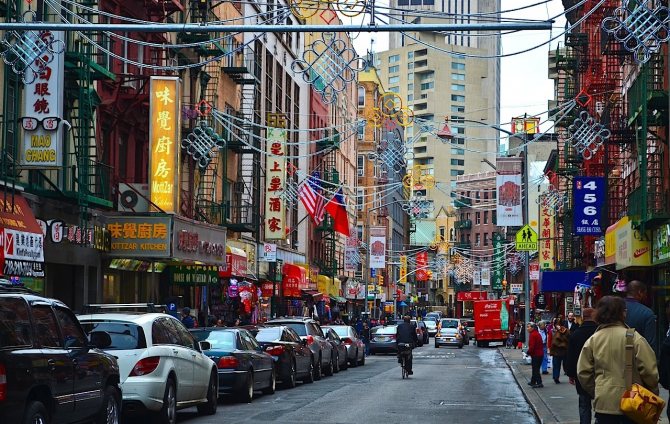Who is the marginalized?
This term was first used in psychology in 1928 by Robert Park to mean a person occupying an intermediate position between rural and urban residents. This is someone who previously lived in a village, village, and then moved to the city, while his cultural values acquired while living in the countryside did not fit into the requirements and foundations of urban civilization. His behavior and habits turned out to be unacceptable for the urban social environment. Today, not only people who do not fit into the urban environment are called marginalized.
This term has become quite widespread. Sociological science classifies a person as marginal whose behavior goes beyond the generally accepted norms and rules of any social group. He is between two conflicting groups. This leads to a person's internal conflict. The marginal is part of two different social groups, but does not accept either of them (does not live by their laws and is not guided by the norms and values accepted in them). From a psychological point of view, a marginalized person physically belongs to one or another social group, but psychologically, morally, and emotionally is outside its boundaries.

Positive and negative marginalism
The word “marginal” can be analyzed in two aspects: positive and negative. After all, the values inherent in a “non-systemic” personality do not necessarily have to oppose everything that is established and philistine. They may well complement it.
Marginalized people are often seen as “weirdos.” The serious passion for classical music of a person from among businessmen makes him strange and special among his colleagues, since the values of high art are rarely valued among them. He is in the minority in his company. And there are many such people in history who feel like strangers in their environment. These are A.I. Solzhenitsyn, A. Einstein, Thomas Mann and a number of other famous personalities. Many of their ideas were not understood and not accepted by their contemporaries, but were highly appreciated in the future. It is impossible to list all the names, but the uniqueness of these individuals always creates favorable conditions for the emergence of an unforeseen, original and unaccounted for case.
And there are marginalized people who rather hinder development. Due to their low intellectual abilities, they cannot adapt to generally accepted conditions; it is easier for them to deny established norms and lead an asocial lifestyle.
Understanding the phenomenon of marginality is often attempted to be interpreted within the framework of a negative attitude. Or you can philosophize and try to find the line between the extraordinary manifestation of the individuality of the average person and the usual perception of the word “marginal,” which is quite difficult.
The meaning of the word "Marginal"
Marginal (from Latin “marginalis”
– extreme or “margo” – edge) – a person living in a social environment, but not accepting the worldview, principles, norms, values, moral ideals, way of life imposed by it. We can say that he is on the edge of the system, outside the laws and orders imposed by the social structure. In the modern Russian language there are many synonyms for the word “marginal”: outcast, black sheep, informal, individual, asocial, nihilist. Example: homeless person, hippie, goth, hermit monk, ascetic.
Also, Karl Marx designated people from the lower strata of society with the term “Lumpen”. In modern times, the two concepts of marginal and lumpen are intertwined with each other.

Signs of marginality:
- disruption of important connections for a person (biosocial, cultural, spiritual, economic) that existed in a previous life;
- constant movement due to lack of attachment to anything;
- internal psychological conflict due to the inability to find oneself and the emergence of mental problems on this basis;
- due to non-compliance with law and order, the ease of becoming an unlawful member of society (offender);
- representatives of the lowest strata of society (homeless people, alcoholics, drug addicts, etc.);
- the formation of one’s own values and norms, which very often contradict and are hostile to the values of the social group to which the marginalized person belongs.
At first glance, the word “marginal” has only negative connotations. Actually this is not true. Like any phenomenon, marginality has, in addition to negative aspects, also positive ones.
, which include the following:
- a different way of thinking and worldview is a source of progressive, innovative activity;
- due to high mobility, the marginalized have a better chance of starting life over, getting a different education, finding a better job, moving to a more prosperous area of the city, or changing their country of residence to a more economically developed one;
- Due to their uniqueness and dissimilarity with others, marginalized people have the opportunity to find an untapped niche in the market for goods and services and engage in a profitable business (open their own business related to the sale of ethnic goods, souvenirs from their previous place of residence). For this reason, marginalized people very often become billionaires.
Can marginality be called a phenomenon?
It is a well-known fact that people who perform absolutely no functions in society begin to actively unite their efforts over time. That is why people who belong to different classes are often called marginalized. Individual people who can safely be called remnants, individuals who left the historical scene and who have not yet managed to find themselves in life. Usually, marginals are an uneducated category of citizens who cannot take on any systemic functions and all because of a general lack of awareness in the process of leadership and making important decisions. The state often singles out marginalized society and focuses on the fact that they are a special problem for the country.
The whole point is that the marginalized do not do anything useful if we consider this issue in the format of active interaction between society and people. These people are dangerous, they often organize protests against the system and believe that they are doing the right thing. The marginalized promote their ideologies to the masses: communism, fascism, anarchism, etc. Who exactly are these people and why do they pay such close attention to them? Are these really just ordinary rebels who don’t like the political system in the country? Or maybe it’s worth digging deeper and it turns out that this is just a mask and in fact they are unfortunate victims of circumstances. It’s difficult to immediately understand and figure out who actually appeared before us; each person has his own path, and even more so for a person who calls himself a marginalized person.
Marginal personality according to Robert Park

American sociologist Robert Park considered the following to be the main character traits and personality traits of marginalized people:
- anxiety;
- aggressiveness;
- ambition;
- touchiness;
- selfishness;
- categorical views;
- negativism;
- unsatisfied ambition;
- anxiety states and phobias.
In society, marginalized individuals were people with an asocial lifestyle (poor refugees, homeless people, beggars, tramps, people with various kinds of addictions, lawbreakers), who can be classified as representatives of the social bottom. Their living conditions have a significant negative impact on their mental state. Any civilized society lives according to its own established rules, customs and norms. R. Park believed that a marginal personality
:
- Rejects any norms and traditions accepted in society.
- Has no sense of duty towards the society in which he lives.
- Experiences a strong need to be alone and avoids the company of people.
Important
! Most sociological experts and practicing psychologists believe that the margins are a source of cultural growth. He can objectively, without external influence, evaluate any phenomenon and situation, because he is not involved in it, as if isolated. It fills a social group with new ideas, views, introduces new trends, helps members of society to develop, broaden their horizons, look at problems from a different perspective, and instills tolerance.
Term
Marginality (Late Latin marginalis - located on the edge) is a sociological concept denoting the intermediate, “borderline” position of a person between any social groups, which leaves a certain imprint on his psyche. This concept appeared in American sociology in the 1920s to refer to the situation of immigrants’ failure to adapt to new social conditions.
Individual marginality is characterized by the individual's incomplete inclusion in a group that does not fully accept him, and his alienation from the group of origin that rejects him as an apostate. The individual turns out to be a “cultural hybrid” (Park R.), sharing the life and traditions of two different groups.
Group marginality arises as a result of changes in the social structure of society, the formation of new functional groups in economics and politics, displacing old groups, destabilizing their social position.
However, marginalization does not always lead to “settling to the bottom.” Natural marginalization is associated primarily with horizontal or upward vertical mobility. If marginalization is associated with a radical change in the social structure (revolution, reform), partial or complete destruction of stable communities, then it often leads to a massive decrease in social status. However, marginal elements are making attempts to reintegrate into the social system. This can lead to very intense mass mobility (coups and revolutions, uprisings and wars). And it can lead to the formation of new social groups fighting with other groups for a place in social space. Thus, the flourishing of ethnic entrepreneurship is explained precisely by the marginal position of ethnic minorities, for whom the usual ways of achieving high status (through inheritance, government and military service, etc.) are difficult and who find effective ways to develop entrepreneurship (including criminal ones). vertical mobility channels.
Types of marginalized people
Depending on the reasons for the development of a marginal way of life and the characteristics of their manifestation, marginalized people are divided into the following types:
- Ethnic
- people who, due to various reasons and circumstances, were forced to change their place of residence and found themselves among representatives of another nationality, nationality, ethnic group, or culture. This type is the most difficult to overcome, since a person takes a long time to adapt to a foreign culture, traditions, language, religion and is unable to change his appearance, race and nationality (descendants of mixed marriages, emigrants). - Social
– associated with the change from one economic system to another (slavery was replaced by feudalism, socialism by capitalism). Entire groups of people cannot immediately find their place and adapt to the new social system. - Biological
– the ideal is a society that takes care of its weak and sick members. In reality, unhealthy people and people with limited physical or mental abilities have no value for society and find themselves left out of life (disabled people, old people, chronically ill people, HIV-infected people, children with Down syndrome and other diseases that limit their capacity). - Economic
- people who, for some reason, have lost their jobs and the opportunity to have a stable income, have lost property, housing, and super-rich people who, due to their material wealth, become cut off from all other members of society (beggars, homeless people, dependents, billionaires, oligarchs). - Religious
are people who do not consider themselves either representatives of any existing religion or non-believers. These are those individuals who believe in their ideals, their gods and create their own churches and sects (prophets, sectarians). - Political
- appear during turning points in history, during a period of political crisis, when people lose faith in modern politicians and their proclaimed values, fight against the existing political system, do not trust the authorities and take a hostile civil position. - Criminal
- when refusal to live according to the laws and moral standards existing in society leads to the commission of an offense (criminals). - Age-related
- when the older generation loses contact with youth, the so-called conflict between children and fathers arises.
Synonyms
Words and expressions that are close in meaning are “freak”, “declassed element”, “nihilist”, “outcast”, “informal”.
The concepts of “lumpen” and “marginal” are not complete synonyms, although they are similar. The difference is in the shades of meaning. Lumpen is a person who “strayed from his own people” and stopped working. These are tramps, beggars, beggars. The marginalized who quit or lost their jobs became lumpen.
If events develop favorably, a person’s period of marginality does not last long: he adapts, joins society, finds work, friends, and ceases to be a marginalized person. However, this “status” can be imposed on a person by society because of his unusualness, originality, difference from others, or illness. This “stigma” is placed in schools, work groups, even in the family. Someone sinks to the social bottom and can no longer get out, while someone decides not to return to a “normal”, ordinary life, and proudly bears the title “marginal”.
Hello, dear readers of the blog site. Who are the marginalized anyway, to put it simply? People who, of their own free will, did not want to be part of society, or?
Or are these the people who are just standing next to the company on the side? Such a sensational word, but not everyone knows exactly what this concept means. I'll say more. The meaning of this word is quite vague. Many people understand when and to whom it can be applied, but they cannot give a definition. But you and I will try.
Examples of marginalized people known in history

Vivid examples of marginalized people in history are entire neighborhoods of New York emigrants, Chinese China Town and Russian Brighton Beach. Many emigrants, due to the prevailing mentality, find themselves outside of American society, unable to integrate into it and accept new values.
Another example is the marginalized as a subclass of Russian society, which arose as a result of the “breaking” of old and the emergence of new socio-economic relations in the 90s of the 20th century. Moreover, the marginalized people then included representatives of both poles of social inequality: the lower strata of society (“the social bottom”) and the so-called “new Russians.”

World famous writers and poets were called marginalized
, artists and creators, geniuses and scientists, who during their lifetime were considered insane and outcasts due to their dissimilarity with others and lack of understanding of their views and creativity by the rest of society. In the modern world, there is another group of marginalized people - people who spend most of their time at the computer, which leads to a change in their consciousness, the predominance of virtual life over real life.
From history, the marginalized include:
- Diogenes of Sinope - ancient Greek philosopher, student of Antisthenes;
- Stepan Razin - Don Cossack, leader of the uprising of 1670-1671;
- Emelyan Pugachev - Don Cossack, leader of the Peasant War of 1773-1775;
- Ustim Karmelyuk - Ukrainian peasant, leader of the peasant movement in Podolia in 1813-1835.
If you remember the literary heroes:
- James Moriarty - A. Conan Doyle Cycle of works about Sherlock Holmes;
- Ostap Bender - Ilf and Petrov “Twelve Chairs”;
- Rodion Raskolnikov - F. Dostoevsky “Crime and Punishment”;
- Lev Myshkin - F. Dostoevsky “The Idiot”;
- Polygraph Sharikov - M. Bulgakov “Heart of a Dog.”
Important
! Marginalized people have existed at all times. This is an inevitable phenomenon. The task of each of us as a full member of society is to create conditions for the marginalized that will facilitate their return to a normal, full life.
"Collars"
Collars
– symbol for various categories of hired workers:
- The golden collars are the scientific and design personnel.
- White collar workers - engineering and technical workers and office workers.
- Gray collar workers - workers in social sectors;
- Blue collar workers are manual workers.
- Pale collar workers are a generalized name for wage earners who have become unemployed.
- Digital collars are a symbol for the newest generation of computers - Neuromachines, which have a complex system of sensory and executive organs. In the future, they will be able to replace humans in many production processes.
- Neuromachines are autonomous intelligent robots that serve as artificial labor.
(Iron collars are the same as robots)
Beyond normal life
Marginality in society increases when disasters begin. If a society is regularly in a fever, its structure loses strength. Completely new social groups and segments of the population are appearing, with their own way of life. Not every person in such conditions is able to adapt and land on a certain shore.
The transition to a new social group is often associated with the need to rebuild behavior and adopt a new value system, which almost always becomes a source of stress.
Having left his usual social environment, a person often faces a situation where the new group does not accept him. This is how marginalized people appear. Here is one example of such a social transition. An ordinary engineer who leaves his job and decides to go into business fails. He understands that he did not turn out to be a businessman, and that it is no longer possible to return to his old way of life. To this may be added financial and other material losses, as a result of which a person finds himself left behind in life.
But marginality is not always associated with the loss of a fairly high former social status. Often quite successful people are considered marginalized, whose views, habits and value system do not fit into established ideas about “normality”. The marginalized may well be quite wealthy people who have achieved success in their field of activity. It’s just that their views on life turn out to be so unusual for the average person in the street that such people are simply not taken seriously or are pushed out of the social community.
Video on the topic
The concept of marginality is a sociological term that emerged in science in the 1920s. But the marginalized people themselves - people who make up a special social group - existed long before scientists introduced this term. These are people who, for some reason, do not fit into the socio-cultural system of society. Large groups of marginalized people began to form at the beginning of the twentieth century. But, probably, the first marginal appeared in the primitive era.
The term “marginality” was introduced by American sociologists to characterize the social phenomenon they observed: the creation of closed communities by immigrants due to their inability to immediately fit into the American way of life. The Latin word marginalis was chosen for the new term, which means “on the edge.” Thus, immigrant communities were characterized as groups that were torn out of their native cultural layer and did not take root in the new soil.
A marginal group is characterized by its own special culture, which often conflicts with the dominant cultural attitudes in society. A typical example is the Italian mafia in America. Don Corleone and his family are marginal elements to American society.
So, in the strict sense of the social term, the first marginalized people appeared at the end of the 19th and beginning of the 20th centuries in the seething cauldron of American immigration. These were people of two cultures, simultaneously belonging to two worlds. Not only in the USA, of course, similar phenomena were observed: for example, Brazil around the same time invited Italian immigrants to the plantations, who did not immediately fit into the existing society on equal terms with the descendants of the Portuguese, and were often perceived as “white”.
Marginalized groups can also emerge as a result of major social upheavals. For example, the revolution in Russia led to the emergence of a large number of marginalized people - people pulled out of the framework of their class and with difficulty finding a place for themselves in the new society. For example, street children of the 20s are a typical marginal group.
Gradually, the concept of marginality in science expanded. The concept of “individual marginality” appeared. It is broader than marginality as a social phenomenon. I.V. Malyshev in his book “Marginal Art” characterizes marginality as “unsystematic”. The marginalized may be people who preserve the past; ahead of their time; simply “lost” and not finding a place for themselves in society and its culture.
In this sense, Sakharov, Thomas Mann, and even Christ can be called marginal, according to Viktor Shenderovich.
So, the first marginal most likely appeared at the dawn of humanity. Perhaps the first homosapiens were just marginalized!
Since society is wary of the marginalized, the life of “outside the system” people throughout human history has been difficult and, alas, usually short. Some of them became social lumpen, outcast pariahs, but many managed to move culture forward and outline new guidelines for the development of society.
Outrageous artists, for example, were often marginalized. They boldly rejected traditional values, creating their own. For example, Diogenes was marginal. The decadents were marginalized. Soviet dudes were marginal.
At the end of the 20th and beginning of the 21st centuries, there were many more marginalized people than in any other historical era. Various informal movements are, as a rule, marginal. The tolerance of modern society allows representatives of marginalized groups to live in their own coordinate system more freely than before.
When reading paper or online publications, you can often come across words whose meaning is unclear. Embargo, mainstream, gender, collapse, gadget, pattern, retail, headliner, trend, fake... What some of them mean can be guessed from the general meaning of the text, but this is not always easy. The task is simplified when a word is currently used by the media so often that it is firmly remembered, and the reader has no choice but to find out or guess the meaning of a particular term.






